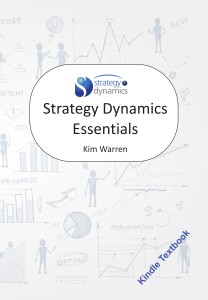Kim Warren on Strategy
Strategy insights and living business models
Getting better value from the value-curve
An example of a framework with widespread relevance … Just had an enquiry from a professor taking the online course, wanting to know if the customer ‘choice pipeline‘ and loyalty states could help assess the impact of a summer school initiative on reducing the high drop-out rate of students.
A framework I need to add to the course is the concept of the value-curve. It is usually used in a crude way to understand why some companies are more profitable than others. Essentially, it compares the ‘benefits’ of what each competitor offers against what customers value, see below. But we can do much better with it …
We want 3 things from customers – to join us, stay with us, and buy more. And we want 3 things from staff – to join us, stay with us, and work better. [As in class 3].
In this issue, the University wants students to join them, stay with them, and work better at their courses, which implies finding out what the ‘value curve’ factors are that motivate these 3 behaviours. As always, the flow-rates are the key here – what value-curve ‘fit’ causes a disloyal student to become loyal, or a loyal student to become disloyal, or a disloyal student to quit? Then, which of the value-curve factors does the summer school address? They could easily develop a simple survey to find out those factors, to assess the University’s fit, and evaluate how the summer school changes both those factors themselves and the movement of students up the loyalty chain.
Copyright © 2025 Kim Warren on Strategy. All rights reserved


